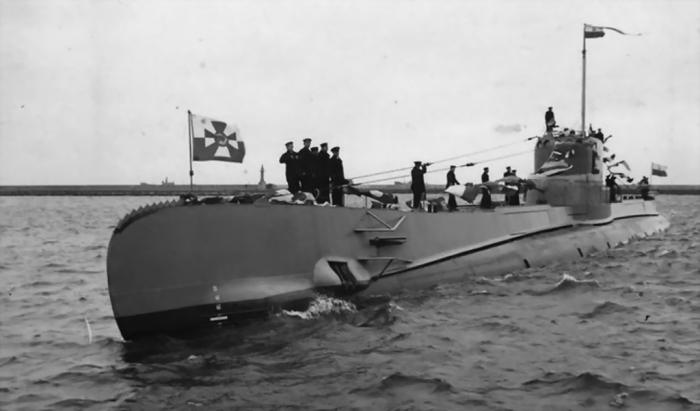Last week, on the 2nd February, was the anniversary of ORP Orzeł (Republic of Poland Ship “Eagle”) being commissioned into naval service. The story of that submarine is one of a kind, and remembered to this day by both Polish people and the citizens of Tallinn, the capital city of Estonia, which witnessed the “Orzeł incident”, as history calls it. What exactly is the ship’s story?
The tale begins in June 1935, when Polish Navy ordered submarines from Dutch shipyards. They were supposed to be a bit bigger than the usual Polish submarines, and capable of surviving long periods of work, away from harbors (a specification that proved to be crucial in its later adventures). Money was a serious issue back then for the Polish Navy, but luckily the Dutch agreed for Poland to cover around 85% of the order costs in food exported to Netherlands, and to use Polish materials to lower the price of the order. Four years later, on 15th January 1938, “Orzeł” was launched, although the ceremony didn’t go smooth. The chilly winds had congealed the grease under the submarine, preventing the ship from sliding down into the water. It took two heavy locomotives to push the submarine down the ramp.

After intense tests, Orzeł was officially welcomed into the Navy a year later, on 10th February 1939. The crew was assembled and spent the next half a year patrolling the local waters, getting to know each other and the ship, to gain experience and become a smooth, harmonious war machine.
In September 1939, the ship had reported the captain, Henryk Kłoczkowski, falling ill. Instead of reaching the Hel harbor or any of the designated neutral harbors, the captain decided to head towards Tallinn, where he claimed he had numerous friends. Unfortunately, when Orzeł reached Tallinn and the local government agreed to let the ship into their docks, it turned out an enemy ship docked in the harbour too. This meant that, according to the international laws, Orzeł could only leave the harbour 24 hours after the other ship, to prevent pursuit. Thus, the submarine had to stay in the docks longer than it was allowed by the naval law. This resulted in the ship being interned – the Estonian military authorities boarded the ship, planning on confiscating all maps and navigation aids, and removing all armaments. The crew, though, was not going to have any of it.
Under the excuse to help the Estonians, the Poles sabotaged most of the commanded disarmament. Later that night – under the orders of the new commander, former chief officer, Lieutenant Jan Grudziński – the crew carried out a daring escape. The guards were overpowered, the mooring lines were cut and the ship was free, though under bombardment.
The captain decided to pursuit enemy ships in the waters of Baltic Sea for as long as his supplies allowed, and then head over to Isle of May, Scotland, which was the destined assembly point for Polish Navy. All that despite lacking any navigation aids other than a list of Baltic Sea’s lighthouses.
Finally, after a hard time surviving in the open sea, having no means to identify themselves and therefore being seen as an enemy by both the Germans and the British, on 14 October 1939, the crew of Orzel managed to repair their radio and make contact with a British destroyer ship, which then escorted them into Rosyth port. That was the end of a 44-days long odyssey of the ship.
Since then, Orzeł was used for escorting and patrolling the North Sea, working with the British Royal Navy.
And here comes the end of the story, a bit abrupt and sudden – the last report from Orzeł was received on 1st June 1940, with the submarine out on another patrol since 23rd May. The return of the ship to Rosyth was set for 8th June, but the submarine never arrived, nor has it informed of being late. There was no response from the ship since then, and it was deemed missing in action on 11th June.
There are several hypothesis; some say that Orzel wandered into a mine field the crew wasn’t informed about. Some say that it was sunk by a German airplane. Some say that it was an allied ship that had mistakenly scuttled the submarine. What’s the truth? We don’t know, and probably never will, as the shipwreck was never found.
 LET'S DESIGN YOUR TOUR!
LET'S DESIGN YOUR TOUR!